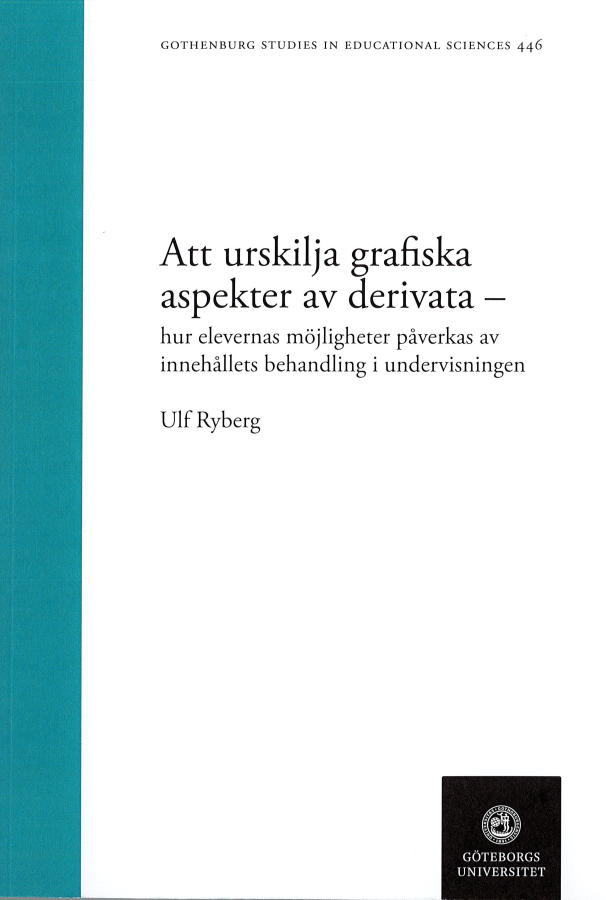The aim of this thesis is to investigate in what ways students’ opportunities to discern graphical aspects of the concept of derivative can be related to the design of instruction. The thesis is based on two empirical studies that together included 144 Swedish upper-secondary students who were enrolled in the course in which the derivative is first introduced. Study 1 was conducted in natural settings and involved collaboration between researchers and teachers. The study generated three different 120-min lesson designs, all of which concerned the same mathematical content, the relationship between a graph and its derivative graph. The designs were equivalent regarding organization and teaching methods. However, the content was handled differently during instruction. Design 1 used multiple representations and graphs of polynomial functions. Design 2 restricted instructions to fewer representations but used a broader variety of graphs. Design 3 was a hybrid of Designs 1 and 2 and contained limited variation regarding both representations and graphs. The results of the study, which were based mainly on qualitative data consisting of observations and students’ explanations on posttest questions, suggested that Design 2 offered the best opportunities to discern graphical aspects of the derivative. The results of Study 1 were further tested in Study 2 wherein Design 1 and a slightly modified Design 2 were implemented in more controlled experimental conditions. Quantitative as well as qualitative data were collected. Statistical analyses of quantitative data showed that the students who participated in Design 2 performed significantly higher posttest scores. However, further analyses also showed that the effect of Design 2 was dependent of students’ prior knowledge. For students with less prior knowledge, the design was not a significant predictor in relation to the posttest. The results of the statistical analyses were strengthened by qualitative data. Analyses of student interviews suggested that Design 2 offered better opportunities to discern graphical aspects of the derivative. However, in line with the quantitative data, the interviews suggested that to what extent discernment took place was dependent of students’ prior knowledge. Overall, the results of the studies highlight the importance of examining how the handling of the content may affect students’ learning of mathematics. In particular, they challenge the assumption that the use of multiple representations is always beneficial and suggest that how to use representations during instruction concerned with the derivative is an important topic for further investigation, both with regard to practice and research.
Parts of work
I. Ryberg, U. (2014). Variationens betydelse för elevernas lärande. Relationen mellan en funktions graf och grafen till funktionens derivata. Göteborg: Göteborgs Universitet. http://hdl.handle.net/2077/37569
II. Ryberg, U. (2018). Generating different lesson designs and analyzing their effects: The impact of representations when discerning aspects of the derivative. Journal of mathematical behavior, Vol. 51, 1-14. visa artikel
III. Ryberg, U. (Manuscript). How the use of representations during instruction can promote development of conceptual or procedural knowledge: A comparison of two lesson designs concerned with the derivative concept.







